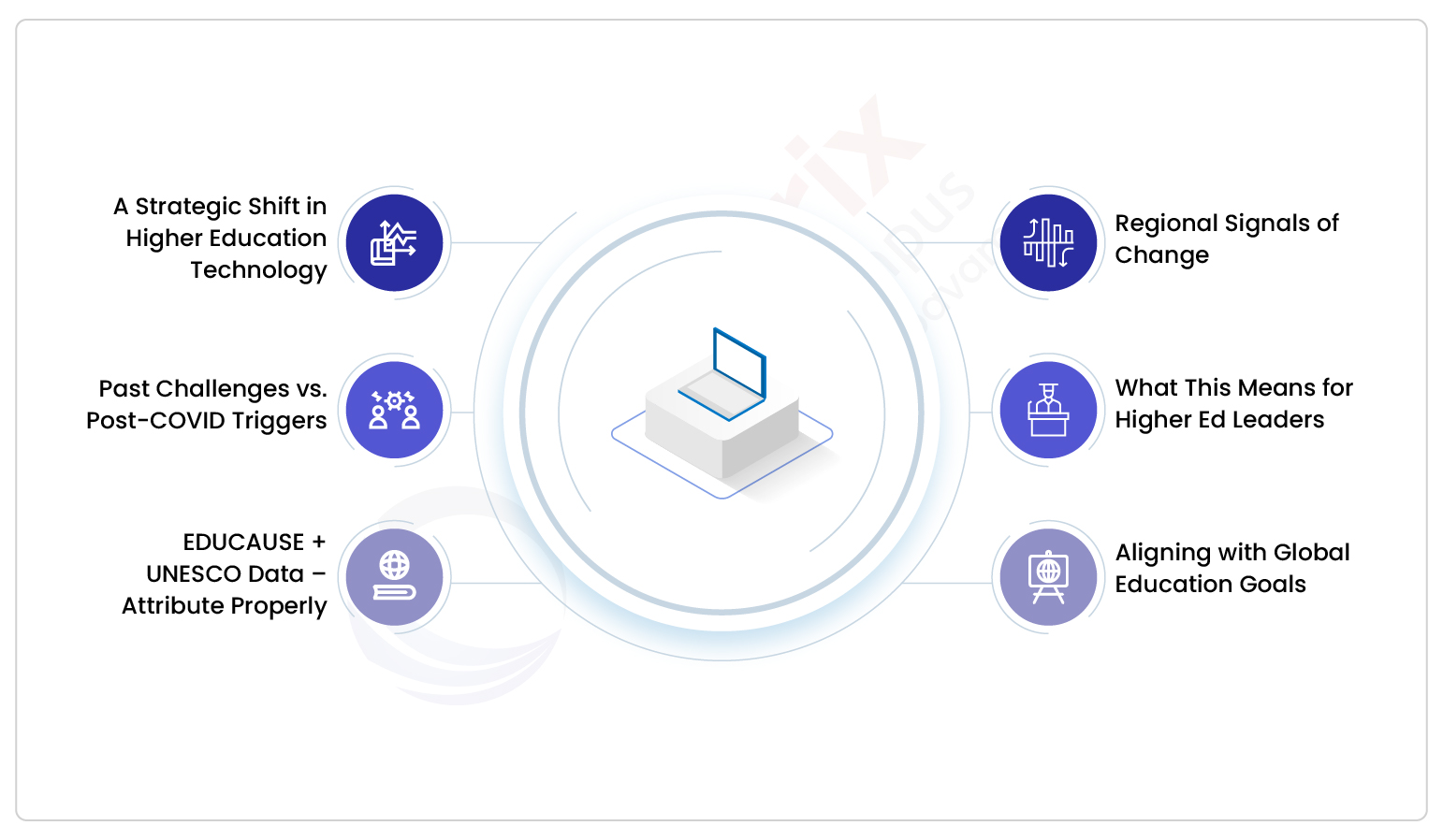Why Digital Architecture, Not Tools, Is Driving Higher Ed’s Next Transformation
A Strategic Shift in Higher Education Technology
Digital transformation is reshaping higher education but it’s not standalone tools driving the shift. It’s the underlying architecture that determines whether institutions can scale, comply, and personalize learning at speed. By moving from scattered systems to integrated digital ecosystems, many universities are able to modernize operations, achieve compliance requirements and deliver personalized and flexible learning at scale. This article outlines how digital architecture has become the strategic foundation for organizations positioned for the future.
Past Challenges vs. Post-COVID Triggers
For years, many institutions have simply built new tools over faulty infrastructure: a series of student portals, timetabling software, quality tracking spreadsheets, and separate LMS systems. The result is limited scalability, inconsistent data, and unnecessary pressure on staff.
Post COVID, these gaps became glaringly visible to institutions. Now, institutions are faced with new issues such as managing hybrid learning systems, establishing traceability for accreditation, and ensuring students have access to all expected digital services in real-time. A robust digital architecture is the most scalable way to connect those dots.

EDUCAUSE + UNESCO Data – Attribute Properly
The EDUCAUSE 2025 CIO and Technology Executive Survey (2021) found that 38% of university CIOs are actively transitioning away from traditional data center models to cloud-native platforms that allow for systems-level integration. This need for change stems from strong pressures to operate with:
- Increased agility
- Real-time visibility around data
- AI-powered insights to inform decision-making
Similarly in the policy space, UNESCO's IITE Insight Report describes how countries across the Middle East and South Asia are evolving their national ICT strategies as a means to make their higher education systems digitally inclusive, interoperable, and future-proof, paying particular attention to cloud infrastructure and digital literacy.
Regional Signals of Change
Countries have already begun to institutionalize modernization at scale:
- Saudi Arabia is investing heavily in digital higher education as part of their Vision2030 economic diversification strategy
- The UAE Ministry of Education requires digital transformation roadmaps aligned with smart governance
- The Philippines’ CHED is championing digital systems for program and outcome visibility that align with OBE requirements.
While innovative software is needed, these efforts require trusts to fully invest in robust interoperable digital infrastructures as part of institutional planning and budgeting.
What This Means for Higher Ed Leaders
Institutional leaders (CIO, Registrars, QA Directors, Deans of Academics, etc.) need to recognize that digital architecture is no longer a back-office consideration. With a robust digital architecture, institutions unlock new possibilities:
- Seamless flow of data across people, programs, provisions (admissions, academics, accreditation)
- Real-time data analytics to support students and inform institutional performance
- Scalable support for hybrid, modular, flexible learning models
- Support for automation with compliance mandates and continuous quality improvement (CQI)
Institutions investing in architectural modernization will be well-positioned to inform and comply with regulations, improve student experiences, and discover long-term cost-savings.
Aligning with Global Education Goals
A solid digital architecture will also deliver alignment with:
- UN's Sustainable Development Goal 4 (Quality, equitable and inclusive education)
- Digital Competency Frameworks such as DigCompEdu and UNESCO's ICT CFT
- National accreditation framework and quality assurance requirements
Once built, institutions will be in a position to operationalize flexible learning, output based performance outcomes, and accreditation requirements through a single pane.
Final Insights
Higher education is at an inflection point. The question is no longer whether to digitize, but how to architect systems that support scale, agility, and accountability.
Institutions that focus on digital architecture, not just digital tools will be the ones shaping the future of higher education.

